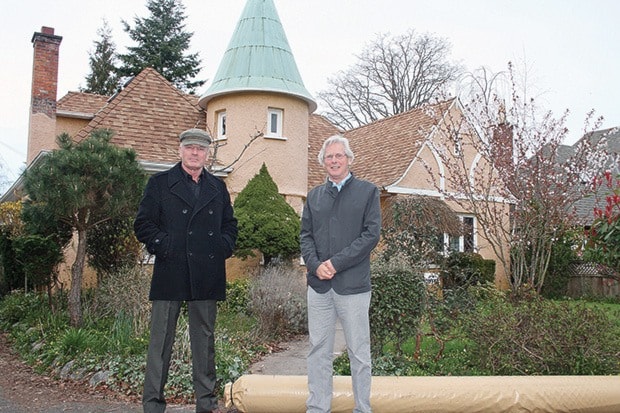The distinct architectural features of many Oak Bay’s home help define the character of the community.
Helping ensure that distinct character remains a part of the community for years to come, a panel discussion next week will reveal some of the secrets to restoring heritage homes.
Oak Bay Heritage presents Restoring Your Home: An Evening With The Experts Wednesday night at Windsor Pavilion.
“I think it will be a benefit to homeowners who love older homes, who want to maintain their character. They face the problem, do they repair, do they replace?” said Oak Bay Heritage Foundation president Robert Taylor, who is facilitating the panel discussion.
“I think what they’ll get out of this session is some really good advice on how they can, in fact, repair a lot of original fixtures. They don’t necessarily have to replace them and go out of character with the house.”
Bill Patterson is the president of Citta Group who has worked on restoring a number of heritage properties throughout Greater Victoria. For Patterson, replacement is always a last resort.
“If it’s unrepairable, than you replace. In the long run, from my experience as a builder, it’s more practical. It actually costs less money to repair than replace in almost all cases,” said Patterson, who will be a part of Wednesday night’s panel.
Joining Patterson on the panel will be Simone Vogel-Horridge, the president of Ross Bay Villa Society, and local author and historian Nick Russell.
“We don‘t own heritage houses,” said Russell. “We are privileged to borrow them for a time, and hopefully we leave them as good as we found them.”
Russell, who has restored several houses, says some homes just cry out to be rescued.
“But you‘ve got to see beneath the surface – beneath the stucco or asbestos or drywall – to find the essential building,” he said.
“The excitement comes when you look beneath those ugly layers and find the real nature of the house. And the reward comes from restoring that essential character, so the original owner could walk in, and say, ‘Oh, it hasn‘t changed a bit.’ All it needs, is time and money.”
There are two types of heritage properties in Oak Bay. Heritage registered is a way of recognizing a home by putting it on the heritage registry, but that doesn’t preserve the home. A heritage designation is something an owner requests from council which protects the house from any changes without a heritage alteration permit.
Taylor said no matter the designation, Oak Bay is blessed with a wealth of older homes.
“They may not be heritage designated, but they’re still valuable old homes which have this character,” said Taylor, who is the midst of renovating his seventh older home.
“There was this huge building boom [in Oak Bay] just before the First World War. About 900 houses were built in a four or five-year period,” said Taylor.
Another minor boom would take place in the late-1920s, with another following in the 1950s.
Patterson is currently working on five those homes constructed during the 1920s, working to resort the storybook cottages of Patio Court, just up from Glenlyon Norfolk School on Beach Drive.
“They were built in 1927 and never had any work done on them. To make them desirable for a family to live in they need to be modernized.”
He said while all of today’s amenities, such as modern wiring and plumbing, will be added to the interior of the homes, the exteriors will retain their original character.
Patterson said restoring older homes often requires more careful decision making than constructing a new home.
“You can go the wrong way easier, you can go too far sometimes,” said Patterson. “The thing that I always say to people is you have to respect the structure that is there as much as you can. It’s not worth it to make a room one foot bigger just because that would be the ideal size. It involves too much work, it’s too invasive. It costs more than what you’re getting back.”
The panel discussion begins at 7 p.m. Wednesday in the Windsor Pavilion, 2451 Windsor Rd. Donations welcome and refreshments will be served
